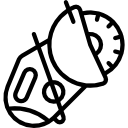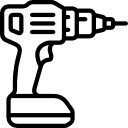- اتو لوله سبز
- اره پروفیل بر
- اره عمودبر (اره چکشی)
- اره فارسی بر
- اره گرد (اره دیسکی)
- اره مویی
- اره میزی
- اره نواری (گوشت بری)
- اره همه کاره (افقی بر)
- ابزار چندکاره
- بالابر برقی
- بتن ساب و موزایک ساب
- بکس برقی
- پیچگوشتی برقی
- پیستوله برقی
- بیسکویت زن
- چکش تخریب
- دمنده/مکنده (بلوور)
- دریل بتن کن
- دریل ساده (سرکج)
- دریل ستونی
- دریل ضربه ای/چکشی
- دریل مغناطیسی (مگنتی)
- دریل نمونه بردار (کرگیر)
- دستگاه جوش
- رنده و فرز نجاری
- سنباده برقی
- سشوار صنعتی
- سنگ دوطرفه (چرخ سنباده)
- سنگ و پولیش
- شیارزن و مرمربر
- فرز مینیاتوری
- فرز انگشتی
- میخکوب و منگنه کوب
- مینی سنگ
How to Create a Useful Facilities Playbook for New Maintenance Employees
Proper onboarding of maintenance staff is critical to ensuring that facilities run smoothly and efficiently. A structured training guide can significantly enhance the integration process for new hires, allowing them to quickly understand their roles and responsibilities. The development of such a playbook not only streamlines training but also instills confidence in the team’s ability to manage tasks effectively.
One key component of this playbook is the SOP checklist, which serves as a vital reference point for employees. This checklist outlines standard operating procedures and can significantly reduce mistakes while increasing accountability. By having clear expectations set forth, new hires can follow a defined path toward mastering their job functions.
Additionally, implementing a task workflow will help new maintenance hires prioritize their duties and improve their time management skills. A well-structured workflow can guide employees through each phase of their work, making it easier for them to adapt and thrive in their new environment. Together, these elements create a robust framework that supports both the new employee and the organization as a whole.
Defining Core Responsibilities and Daily Tasks for Maintenance Staff
Clear understanding of core responsibilities helps maintenance staff perform their duties efficiently. The following outlines the primary roles and daily tasks assigned to maintenance personnel:
- Routine Inspections: Conduct regular assessments of facilities to identify any maintenance issues. This includes checking HVAC systems, plumbing, electrical systems, and structural elements.
- Repairs and Maintenance: Address repairs needed for equipment and facilities. Tasks may involve fixing leaks, replacing light bulbs, and maintaining machinery.
- Safety Protocols: Adhere to compliance rules to ensure a safe working environment. Staff should understand emergency procedures and participate in safety training.
- Emergency Preparedness: Familiarize with the emergency map of the facility. This knowledge is crucial during unexpected situations where prompt actions are necessary.
- Inventory Management: Keep track of supplies and tools necessary for maintenance tasks. Ensure that materials are available for both routine and emergency repairs.
- Documentation: Maintain accurate records of maintenance activities, services performed, and inspections done. This documentation serves as a training guide for new hires.
- Collaboration: Work collaboratively with other departments to coordinate maintenance activities, ensuring minimal disruption to daily operations.
This outlined structure provides a solid foundation for new maintenance hires, ensuring they are aware of what is expected in their role while supporting compliance and safety standards throughout the facility.
Implementing Standardized Procedures for Equipment and Safety Protocols
Establishing standardized procedures is a critical component of the Facilities Playbook for new maintenance hires. This framework ensures all team members adhere to the same guidelines, enhancing both operational consistency and safety.
Developing a training guide that outlines specific equipment handling techniques is necessary. This guide should include instructions tailored to each type of machinery encountered in the workplace. By familiarizing new hires with the operational standards, you minimize the risk of accidents and equipment damage.
Incorporate an SOP checklist that details necessary steps in routine maintenance tasks. This checklist serves as a quick reference for staff, allowing them to follow the established task workflow efficiently. Regular updates to this checklist will ensure ongoing compliance with safety regulations and industry standards.
Compliance rules should be explicitly defined within the playbook. New hires must understand the importance of adhering to these regulations, which not only protect their safety but also the integrity of the workplace. Providing examples of potential hazards and appropriate responses reinforces this learning.
Regular training sessions should accompany the playbook to reinforce these standardized protocols. Ensuring continuous education will keep all staff informed about any updates to procedures or regulations, thus maintaining a safe and orderly environment in facilities management.
Establishing Training and Onboarding Processes for New Team Members
Creating a successful onboarding experience is key to integrating new maintenance hires into the team. The first step is developing a structured training guide that outlines the specific procedures and expectations for new hires. This guide should include a detailed overview of task workflows, including typical service timelines and the various responsibilities team members will assume.
In addition to the training guide, a sop checklist should be provided to ensure compliance with safety and operational standards. This checklist serves as a quick reference for new hires to understand the procedures they must follow on a daily basis, from equipment handling to safety protocols.
New employees should also be introduced to the emergency map, which highlights key safety exits and emergency equipment locations. Familiarizing them with this map early on can help in crisis situations where quick action is necessary.
Establish a clear reporting chain so that new hires know whom to approach with questions or issues. This clarity helps promote communication and support within the team, ultimately contributing to a more robust working environment.
Finally, consider implementing a mentor system, pairing new hires with experienced team members who can guide them through the onboarding process. This approach helps reinforce learning and engagement, making transitions smoother. For more resources on facility maintenance best practices, visit https://professionalbm.com/.




